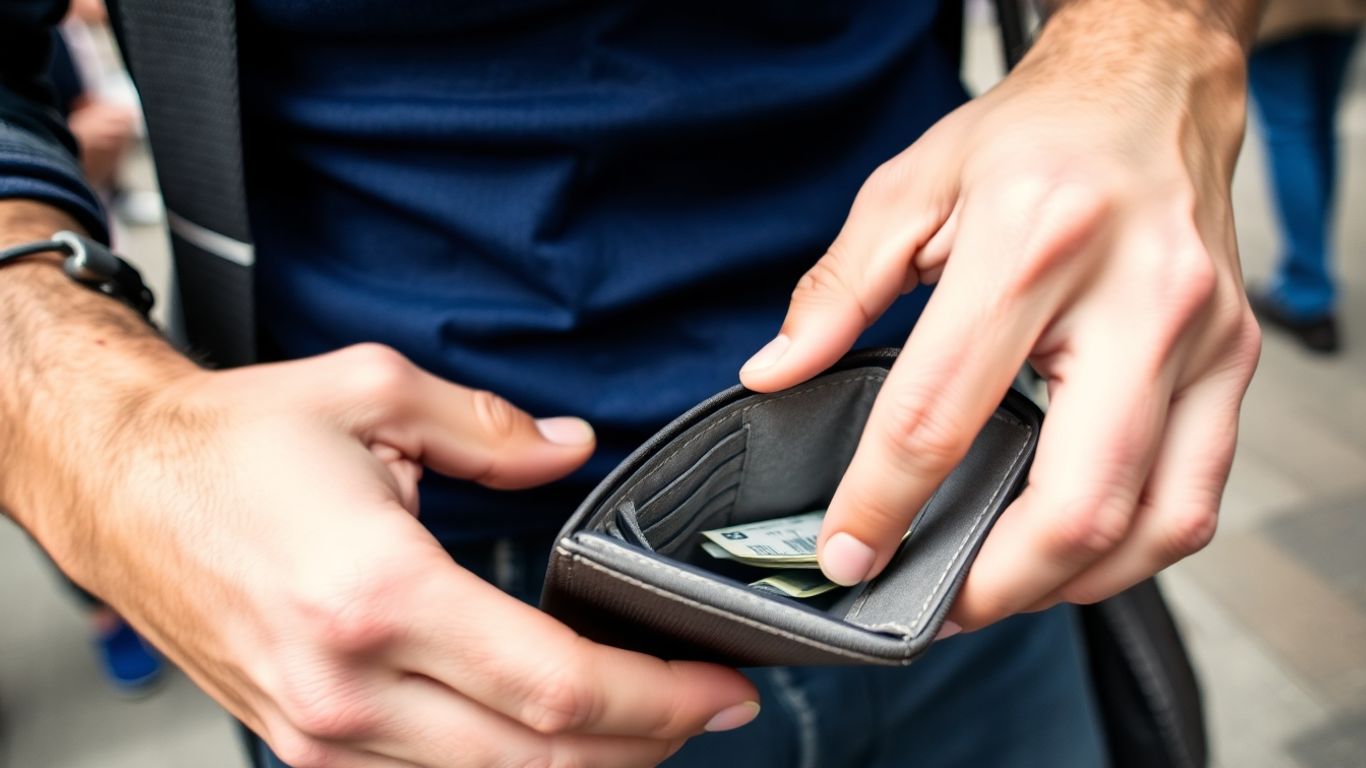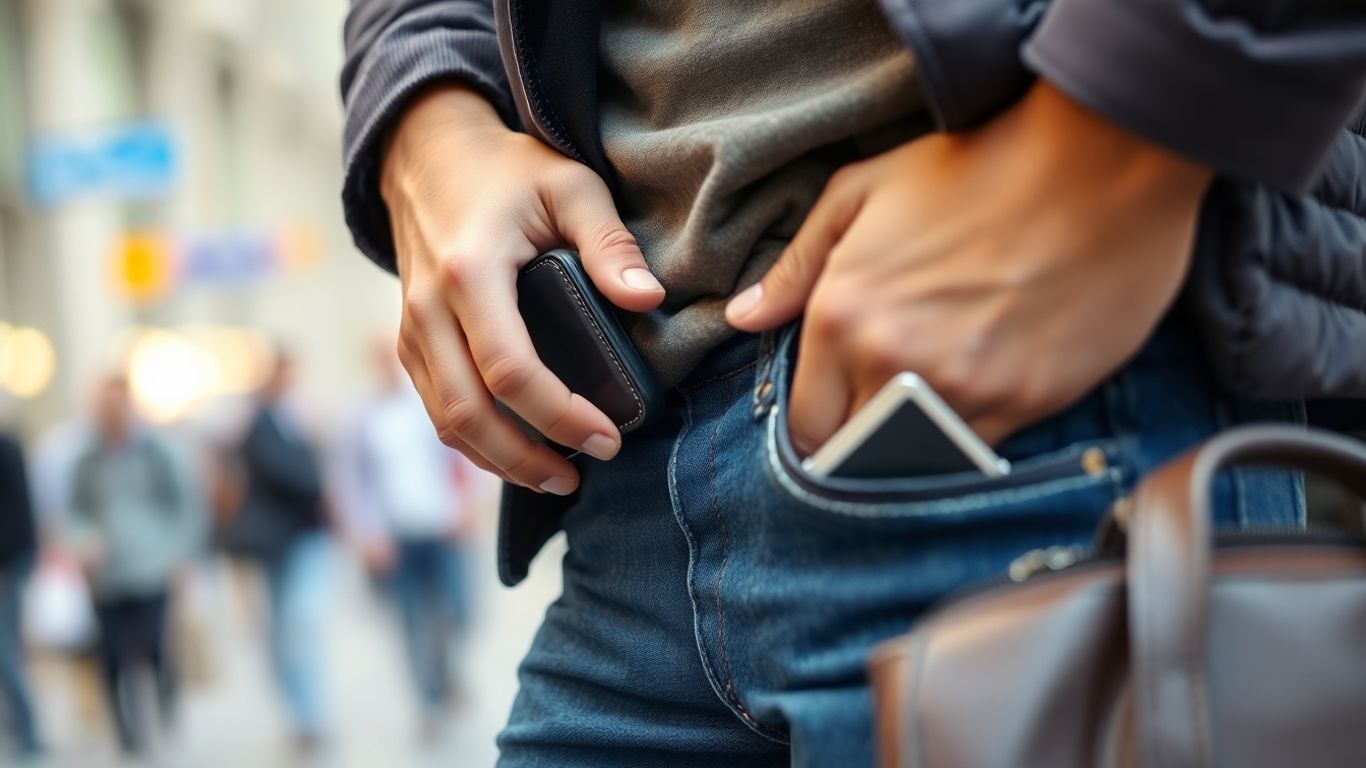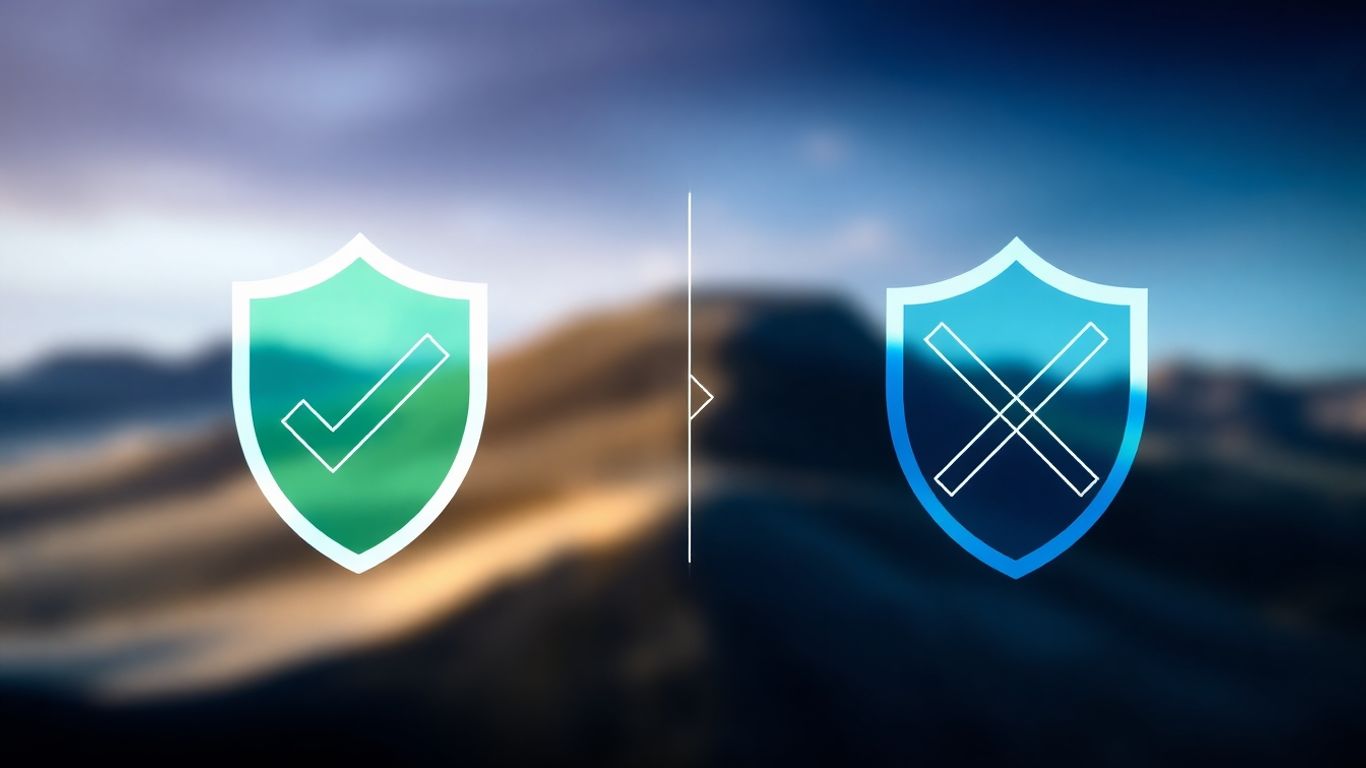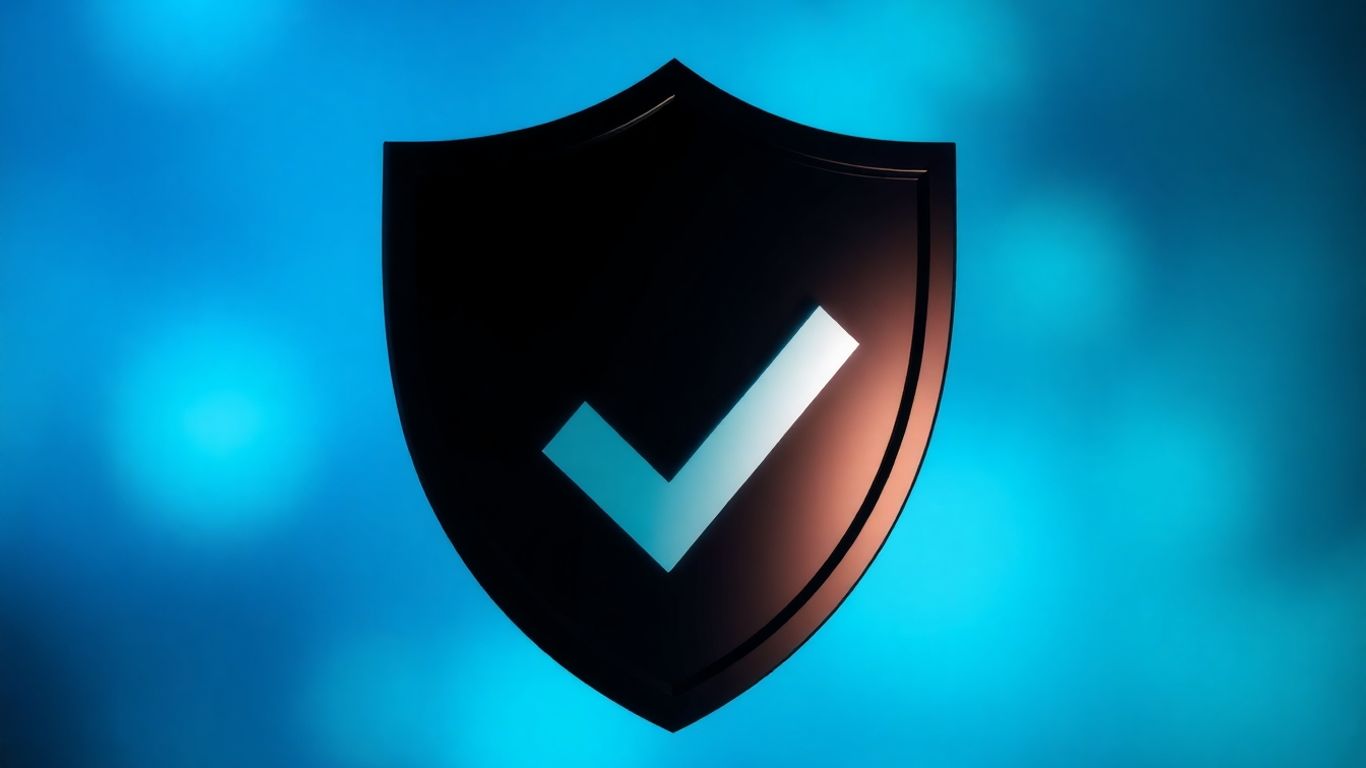[ newsletter ]
Stay ahead of Web3 threats—subscribe to our newsletter for the latest in blockchain security insights and updates.
Thank you! Your submission has been received!
Oops! Something went wrong. Please try again.
Lost your wallet? Learn how to track a wallet quickly with these essential steps, from retracing your steps to using technology and protecting yourself from identity theft.





Losing your wallet is a real bummer, isn't it? One minute it's there, the next it's gone. You start to panic, thinking about all your cards and IDs. But don't freak out just yet. There are steps you can take to figure out how to track a wallet and hopefully get it back. This guide will walk you through what to do, from the immediate actions to a more thorough search.
Okay, so you've realized your wallet isn't where it should be. It's a sinking feeling, right? Before you start picturing all your cards being used for a shopping spree, let's take a moment. The most important thing right now is to stay calm. Panicking won't help you find it and might make you forget important details. Think of it like this: you're not just looking for a wallet; you're starting a mini-investigation.
Seriously, just pause. Take a few deep breaths. Maybe count to ten, or even try that box breathing thing – four seconds in, hold for four, four seconds out. It sounds simple, but it really helps clear your head so you can think straight. When you're not stressed, you're much better at remembering things and making smart decisions.
Now, grab a piece of paper or open a note on your phone. What was actually in that wallet? Jot down everything you can remember. This isn't just for your memory; it's super useful later. You'll want to know exactly which cards to cancel and what identification needs replacing. Start with the big stuff:
Don't forget about any cash you might have had, though that's obviously harder to track.
Before you declare it gone forever, let's do a quick check. Where did you last have it? Did you switch jackets? Did it fall between the car seats? Maybe you absentmindedly left it on the kitchen counter or in the laundry basket. We all have those spots where things tend to pile up. Check your usual

Okay, so your wallet is officially missing. Before you panic, let's try to jog your memory and retrace where it might have gone. This is often the most effective way to find it, especially if it's just misplaced and not actually stolen.
Take a minute to close your eyes and really think back. When was the absolute last time you remember having your wallet? Don't just think about where you saw it, but what you were doing. Were you paying for coffee? Did you pull it out to show your ID? What were you wearing? Sometimes remembering the context, like the specific jacket or pants you had on, can help you pinpoint where it might have fallen out or been left behind. Try to walk through your day chronologically, from the moment you woke up until you realized it was gone.
Once you have a clearer picture of your movements, it's time to hit the pavement. Go back to the places you identified in your mental reconstruction. This includes shops, restaurants, your workplace, or even just the car. Don't just glance around; ask people who work there if anyone has turned in a lost wallet. It's amazing how often things end up in the lost and found bin or are handed in by honest people.
Our phones are basically extensions of ourselves these days, and they can be super helpful when you're trying to remember where you've been. Check your phone's location history if you have that enabled – Google Maps Timeline is great for this. You can also look at your recent photos, texts, or even your banking app's transaction history. Seeing a charge from a specific store or a picture you took at a certain location can be a big clue. Sometimes, just talking through your day with a friend can help too; they might remember something you've forgotten.
Losing something important like a wallet can feel overwhelming, but taking a structured approach to retracing your steps can significantly increase your chances of finding it without causing unnecessary stress.

Okay, so your wallet is officially MIA. It's a rotten feeling, I know. But before you panic too much, let's think about who might have seen it or where it might have ended up. This is where you become a bit of a detective, reaching out to places you've been and letting the right people know.
Think about the last few places you actually used your wallet. Did you buy coffee? Grab groceries? Pay for gas? It's worth giving those spots a call. They might have found it tucked away somewhere or handed it in. When you call, be ready to give them a general idea of when you were there and what you might have been buying. This helps them narrow down the search. Don't just call the main number; ask to speak to a manager or someone who might be in charge of lost items. Sometimes, a quick chat with the cashier who served you can jog their memory too.
Many larger establishments, like malls, airports, or even public transport systems, have dedicated lost and found areas. If you visited one of these places, it's a no-brainer to check in with them. They usually have a system for logging items that come in. You might need to describe your wallet – color, material, any distinguishing marks – and what was inside. Some places even have online forms you can fill out, which can be handy if you can't get to them in person right away.
This step is especially important if you suspect your wallet was stolen, or if it contained really sensitive documents like your driver's license, Social Security card (though hopefully, you don't carry that around!), or anything with your Social Security number on it. Filing a police report creates an official record. This can be super helpful later on if any fraudulent activity pops up. You'll need to provide details about when and where you think it went missing. They might not be able to go out and search for it themselves, but having that report on file is a good safety net.
Filing a police report is more than just a formality; it's a proactive step to protect yourself. It establishes a timeline and official record, which can be invaluable if you need to dispute unauthorized transactions or identity theft claims down the line. It's a small effort that can save you a lot of headaches later.
Okay, so your wallet is MIA. Before you panic, let's talk about the cool gadgets and apps that can actually help you find it. Technology has come a long way, and there are some pretty neat ways to track down a missing wallet without having to tear your house apart.
These little guys are a game-changer. Think of them as tiny GPS devices for your wallet. You usually stick one inside, and it pairs with your phone. If you lose your wallet, you can use an app to see where it is. Some use Bluetooth for close-range finding – like if it's just under a couch cushion. Others tap into bigger networks, using other people's phones anonymously to help locate your wallet even if it's miles away. It's pretty wild how it works, honestly.
Investing in a smart tracker is one of those things that might seem like an extra expense, but if it saves you from the headache of a lost wallet and potential identity theft, it's totally worth it. Plus, many of them have long battery lives or are rechargeable, so you don't have to worry about them dying.
Even if you don't have a dedicated wallet tracker, your phone might already have tracking capabilities you can use. If you have location history turned on for apps like Google Maps, you can often look back at your timeline to see where you've been. This can be a huge help in retracing your steps. Similarly, if you keep your wallet with your phone, you might be able to use Apple's 'Find My' app or Google's 'Find My Device' to locate your phone, and by extension, your wallet.
This one's pretty straightforward. If you took a taxi, Uber, Lyft, or public transport recently, check your app history. Most of these services keep a record of your rides, including the driver's name and vehicle information. You can usually contact the company or the driver directly through the app to see if your wallet was left behind. It's a simple step, but it often solves the mystery quickly, especially if you were on the go.
Okay, so you've retraced your steps, called a few places, and you're pretty sure the wallet didn't get left out in the world. Now it's time to turn your attention inward, to your own living space. This is where things can get a little frantic if you're not careful, but a good strategy makes all the difference. Don't just tear your house apart; approach it like a detective.
Before you start digging through the linen closet, let's hit the spots where wallets tend to hide or get dropped without us even realizing it. Think about where you usually put things down when you first come home, or where you might have tossed them absentmindedly.
If the usual spots don't yield results, it's time for a more methodical sweep. The key here is to be systematic. Pick a room, and search it completely before moving to the next. Use a flashlight, especially for darker areas like under furniture or inside cabinets. Sometimes, a wallet can blend in surprisingly well, so a good light source can help spot a glint of leather or plastic.
Remember, panic is your enemy. Take your time. Look in places you wouldn't normally think to put a wallet, like inside a shoe, behind books on a shelf, or even in the refrigerator if you were distracted while putting groceries away. It sounds crazy, but when you're stressed, anything is possible.
Sometimes, a fresh pair of eyes is exactly what you need. If you've searched your place top to bottom and still come up empty, ask someone else to help. They might spot something you've overlooked simply because you've looked at that spot a dozen times already. Make it a team effort; assign different areas or types of places to search. It can also be a good distraction from the stress of losing your wallet, and who knows, maybe they'll find it while reminiscing about that time you lost your keys in the freezer (true story!).
Losing your wallet is a really stressful event, and honestly, the thought of someone getting their hands on your personal information can be downright terrifying. It's not just about the cash you might lose; it's the potential for identity theft that really keeps you up at night. So, once you've done the initial search and are starting to accept your wallet might be gone for good, it's time to get serious about protecting yourself.
This is probably the most immediate and important step. You need to contact your bank and credit card companies right away to report your cards as lost or stolen. Most financial institutions have a 24/7 hotline for this. Have your account numbers ready if you can, but even if you don't, they can usually find your account with your name and address. The sooner you report them, the less likely fraudulent charges are to appear on your statements. Many banks now offer a temporary card freeze through their mobile apps, which can be a lifesaver if you think you might just have misplaced a card and want to give yourself a little time before canceling it permanently. Once canceled, you'll need to arrange for replacements, which can take a few days to arrive.
Beyond just canceling cards, you should take steps to actively prevent identity theft. This often involves contacting the major credit bureaus. You can ask them to place a fraud alert on your credit file. This means that any company requesting your credit report for a new account will need to take extra steps to verify your identity. It's a good idea to do this with all three bureaus: Experian, Equifax, and TransUnion. You might also consider getting a copy of your credit report to review it for any suspicious activity that might have already occurred. If you suspect your Social Security card or other highly sensitive documents were in the wallet, reporting it to the police is a good idea. They can file a report, which creates a record that can be helpful if you need to dispute fraudulent accounts later. Remember, it's always better to be safe than sorry when it comes to your personal data. Being cautious of unsolicited communications is also key to preventing your personal information from being compromised [c1ac].
If you're really worried about identity theft, a credit freeze is a more robust step than a fraud alert. When you freeze your credit, it restricts access to your credit report, making it very difficult for identity thieves to open new accounts in your name. You'll need to contact each of the three major credit bureaus individually to place a freeze. While it offers strong protection, remember that you'll need to temporarily lift the freeze if you plan to apply for new credit yourself, like a mortgage or a car loan. It's a bit of a hassle to manage, but for many, the peace of mind is well worth it. Here's a quick rundown of what to do:
Losing your wallet means more than just losing cash. It's about protecting your identity from potential misuse. Taking these steps quickly can save you a lot of trouble down the road.
Okay, so your wallet is officially missing. Before you panic too much, think about tapping into the power of your online community. Sometimes, a simple post can work wonders. People are often willing to help a neighbor out, especially when it comes to something as frustrating as a lost wallet.
This is probably your best bet. Think about Facebook groups for your town or neighborhood, or even local subreddits if you're on Reddit. These places are full of people who live nearby and might have seen something. When you post, be specific but safe. Mention the general area where you think you lost it and the approximate time. For example, you could say, "Lost my wallet yesterday afternoon near Elm Street Park. It's a black leather wallet. Please message me if you've found it." You can also check out local classifieds or community boards online.
If you're using broader platforms like Twitter or Instagram, be even more careful. You don't want to broadcast sensitive information. A short, to-the-point message is best. Something like, "Hoping someone found my wallet today in the downtown area. Please reach out if you have any info." It's a good idea to have a friend or family member help you manage responses to ensure you're not giving out too much personal data. Remember to check any lost and found pages or groups specific to the places you visited, like a favorite cafe or gym. You might even find someone posting about finding a wallet, which could be yours! It's always worth a shot to see if anyone has posted about finding a wallet on local community groups.
Losing your wallet is a real bummer, no doubt about it. It feels like a mini-crisis, right? But take a breath. You've gone through the steps, retraced your movements, and maybe even called a few places. Whether you found it tucked away in a coat pocket or had to cancel those cards, the important thing is you're handling it. Remember to keep a list of what was inside for next time, and maybe think about one of those little trackers. It's a tough situation, but you've got this. Now, let's just hope you don't have to do this again anytime soon.
Take a deep breath and try to stay calm! Panic makes it harder to think clearly. Then, try to remember when and where you last had it. Make a quick list of everything that was inside your wallet, like cards and your ID. This will be super helpful later.
Think back through your day. Where did you go? What did you do? Mentally walk through your last 24 hours. If you can, physically go back to the places you visited recently. Sometimes, checking your phone's activity or past photos can remind you where you might have left it.
Yes, definitely! Call any stores, restaurants, or public transport you used. Ask if anyone turned in a lost wallet. Most places have a lost and found, and the staff might have seen it. It's worth a shot!
You need to act fast! Call your bank or credit card company right away to cancel those cards. This stops anyone from using them without your permission. They'll issue you new cards.
If you have a smart tracker (like a Tile or Apple AirTag) attached to your wallet, use its app to find it. If not, you might be able to use your phone's location history (like Google Maps Timeline) if you had it with you, or check ride-share app history.
If you've tried everything and still can't find it, you might need to consider the possibility of identity theft. Report the loss to the police, especially if your ID was in the wallet. You might also want to consider freezing your credit to prevent any unauthorized activity.


